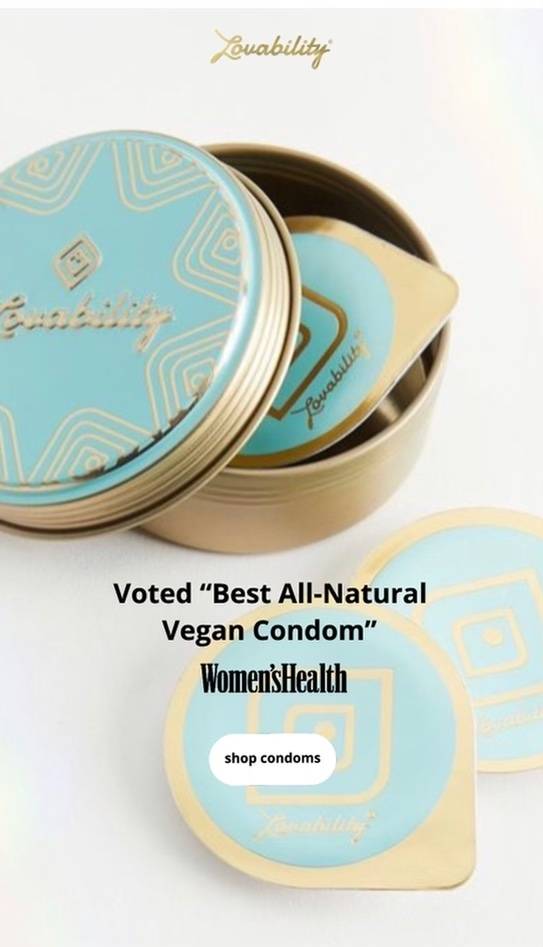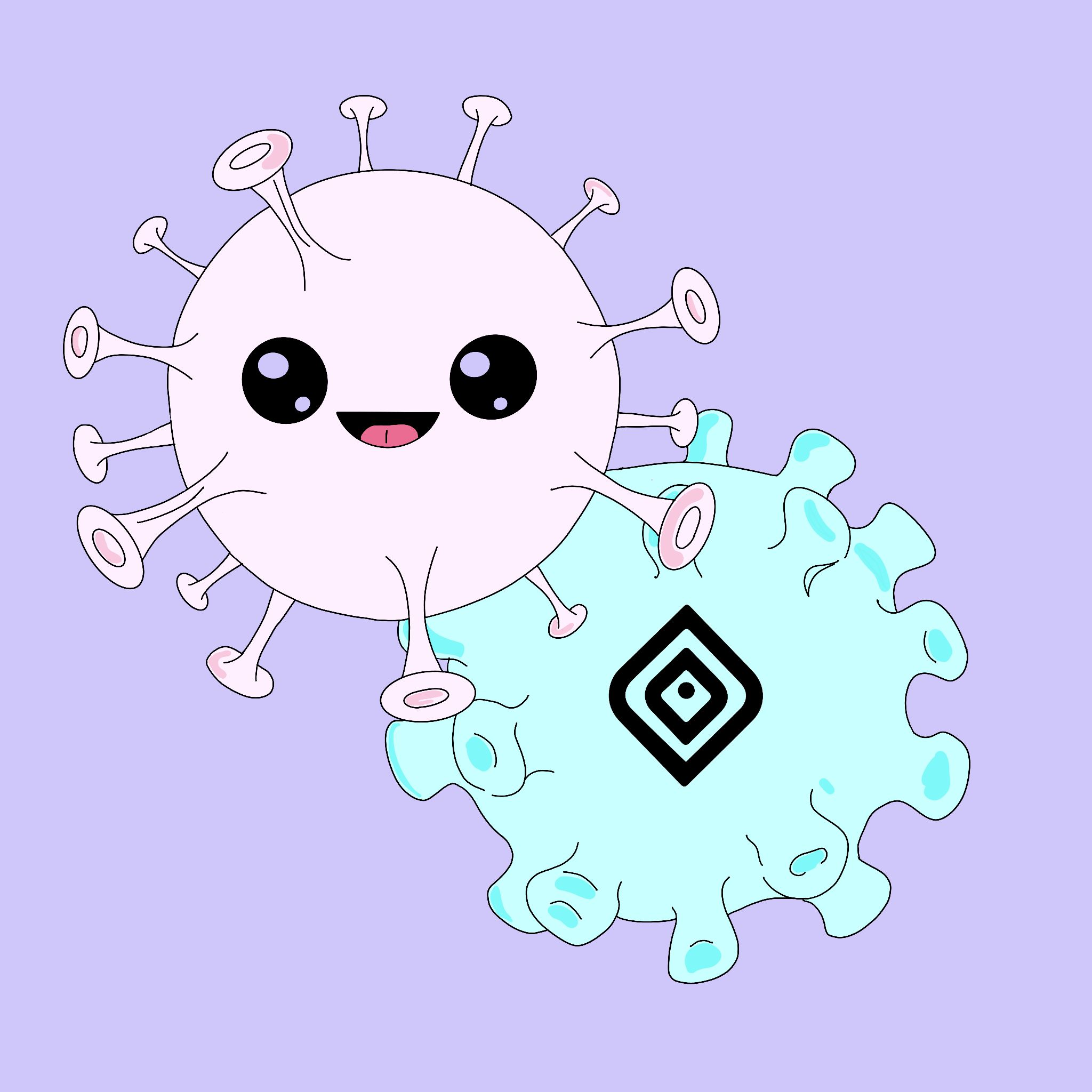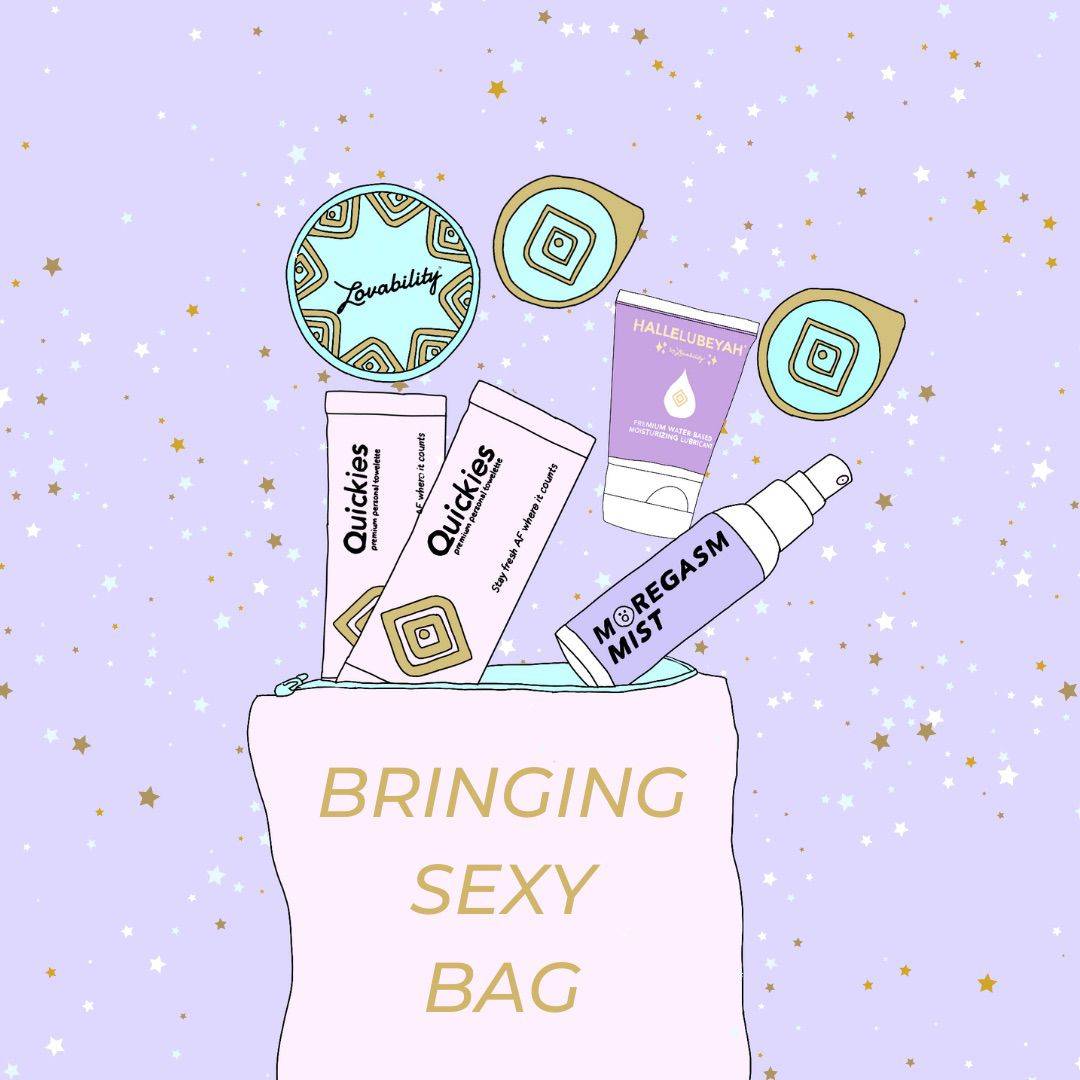
How A Plumbing Mishap Became One Woman's Sexual Awakening...and Career
One fun part about maturing is realizing that most of the so-called shameful awakenings we were conditioned to be embarrassed by were totally normal. Many of us humped pillows and felt funny flutters watching Dirty Dancing. Everyone experimented with whatever (hopefully safe) household items they had at their disposal. And let's be honest—nothing was off-limits.

While some of us were guided into the land of masturbation via friend or magazine article (no thanks to sex ed!), others found their solo groove purely by accident. As was the case with Lovability Co-Founder Maureen Pollack.
Self-stimulation was not a taboo topic by any means during Pollack's childhood. According to her, she "figured out masturbation" when she was just three years old. Knowing how to take care of herself (especially during the years of raging teenage hormones) gave her a safe route to explore her body's pleasure-producing capabilities without having to engage in sex with someone before she was ready.
"Society didn't get a grip on me to tell me I'm a dirty girl," she said. "My parents were always very open and wonderful. I give them a lot of credit for never shaming anything, but I definitely felt the social pressure from society."
For the most part, the usual methods worked just fine at satisfying those natural urges. But Pollack accidentally stumbled upon an entirely new layer of gratification when she was 15 years old.
The Pleasure Of Water Masturbation
While taking a bath one evening, she used the faucet to help her sit up. It popped off, and the water from the pipe behind it started shooting straight out. "It hit me in the face," she says, recalling the exact moment her world changed. "I jumped back, and it hit me somewhere else magical. And let's just say that that was my eureka moment. I went to heaven."

For obvious reasons, Pollack opted not to tell her parents about the pipe burst. Instead, she took four baths a day, often staying in until the water went cold. Even though she was no stranger to climaxing, she said masturbating with water gave her some of the most intense orgasms of her life.
"It was like nothing I had ever experienced before. So I enjoyed that faucet coming straight out for about a week. And then my father fixed it."
Much to her dismay, Pollack's father quickly repaired the broken faucet, unknowingly cutting her off from the out-of-this-world pleasure portal she had discovered. But Pollack wasn't about to give up that easily. She tried angling with her showerhead and scooting under the replaced faucet, but the water dispersion was either too sharp or too wide to do anything but tease her.
"I was like a dog without a bone dying to get that experience back," she said. "I was in love. I was going to marry my bathtub." So one day, while her dad was out, she grabbed a sledgehammer from the garage and sent that shiny new faucet to pipe heaven.

"I enjoyed it for another three or four days, and my dad fixed it again," Pollack said. "I was mortified. He yelled, 'How the hell did this happen?' And I was like, 'I don't know. It wasn't me.'"
Knowing she probably couldn't get away unscathed if she brought out the sledgehammer again, 15-year-old Pollack eventually requested a handheld showerhead for "her curly hair." Her parents obliged, it did the job but it had nothing on laying back and letting the water work it’s magic hands-free so she put her pipe dreams to bed. But no matter how much her sexual knowledge evolved, she never did forget about that experience.
When she became 18 she was able to purchase sex toys she ran out and started her collection. "I was like Ariel from 'The Little Mermaid,'" she joked. "I had gizmos and gadgets a plenty. I probably have almost everything under the sun that's body safe, and never was I ever able to experience that kind of orgasm again."
It wasn't until years later when she was advising OB-GYN practices about stimulation, that her faucet fantasies were brought back to life. Pollack always recommended water as a gentle masturbation technique (especially for women who recently experienced childbirth or trauma) and encouraged doctors to tell their patients about the power of scooting under the faucet AKA the bathtub technique.
But when one of her OB-GYNs brought up patients with immobility issues who might not be able to position themselves that way, she remembered her first love: the busted pipe.

"I'm like, I had this experience at 15—just create a water diverter," she said. "They called me three days later and told me I needed to invent it, and how it will be most body-safe method for both pleasure and feminine hygiene for women!"
After some slight hesitation and convincing from her peers, Pollack did just that. And in 2014, The WaterSlyde was born. Her patented aquatic stimulator attaches to your faucet and diverts a seriously hypnotic flow of water right where you want it. There are no batteries or charging cords to worry about. You just turn the water to your desired temperature and let the water flow and ride the waves of pleasure.
"When I think back to my original experience, it's the fact that I was able to lay there comfortably without having to do any work. Removing my hands from the situation, I think I was able to get lost in my imagination and fantasize. It was just this indulgence, and there's nothing like it on the market."
The WaterSlyde is undeniably the most body-safe and eco-friendly sex toy out there—and we can't think of a better way to honor International Women's Day than by treating yourself to one. You don't have to take a sledgehammer to your faucet or do bathtub yoga to experience the mind-blowing pleasure that bath time can offer. Just add The WaterSlyde to your self-care routine and experience just how good you can really feel. We all deserve more pleasure in our lives!
About The Author
Emily Blackwood is a freelance journalist committed to answering the plaguing question of what makes us truly happy. Turns out, it's a lot. Her work has been published in SELF, HuffPost, and YourTango. You can learn more here.
___________________________________________________
Medical Disclaimer: The information provided here is intended for educational and informative purposes only and is not intended to serve as medical or professional advice. If you have any concerns or questions about your health, you should always consult with a physician or other health-care professional.

3 Reasons Why Masturbation NEEDS To Be A Part Of Sex Ed
I’ve never met anyone with a positive memory of sex ed. Most of us share in the equally horrifying experience of listening to your grumpy gym coach talk about tampons and chlamydia while the whole class snickered and sneered. Let’s just say absolutely no vital information was retained, hence why the majority of our sexual know-how was derived from less embarrassing formats such as magazines and older siblings.
That would be all fine and well—except that of the over 20 million sexually transmitted infections that happen every year, 15- to 24-year-olds account for almost half of them.

Lovability Co-founder and Resident Pleasure Queen Maureen Pollack is mega passionate about what is (and isn’t) taught in schools. According to her, a major piece is missing from the curriculum that could very well reduce those numbers and empower young people to have healthier outlets for sexual expression. And that missing piece is masturbation.
“When I was 15, I was the girl teaching all of her friends how to self-stimulate,” Pollack says, chuckling. “I didn’t have any stigma on virginity or any notion of trying to save myself, but I think I naturally abstained from sex because I could create my own pleasure. I was able to wait until I found somebody I wanted to do it with, whereas my friends would come to me upset that they hooked up with a guy because they couldn’t control themselves. They didn’t do it because they wanted to be with them, but because they had no other outlet.”
Yet while masturbation is a normal, healthy part of human sexual behavior, for many patriarchal (and downright archaic) reasons, self-pleasuring is viewed as too taboo to teach. Pollack believes this needs to change—and here’s why.
Reason #1: There's No Such Thing As Safe Sex

In most health classes, students are given two options for going to pound town: safe sex or total abstinence. Pollack argues what anyone who went through puberty will tell you. Neither of these options are great—or very realistic.
“There’s no such thing as safe sex,” she says. “There’s only safer sex.”
To be clear, the “safe” in “safe sex” refers to the prevention of STIs and unwanted pregnancies. Most of the practices that are defined as safe sex (like wearing a condom, oral sex, etc.) can only reduce your risk of catching an STI or becoming pregnant. Only abstinence can 100% guarantee your safety in that regard.
“If anybody wants to abstain from sex, great,” Pollack says. “That’s your choice, and I’m all for people living a life they want to live. But celibacy can be extremely difficult and most people are challenged to keep it 100%.”
Your vibrator, on the other hand, can’t give you an STI or knock you up. That’s why self-pleasuring is the only form of sexual engagement that can actually be considered safe sex.
Reason #2: The Benefits of Masturbation Far Outweigh The Risks

Outside of the whole eternal-damnation thing (BTW, nowhere in the Bible does it explicitly say that masturbation is a sin; some interpret “spilling the seed” as semen, but women can’t spill a seed, right?), there are only a few risks that come with self-stimulation:
* Bacterial vaginosis: caused by sex toys that are not body-safe or weren’t properly cleaned before use.
* Porn addiction: caused by watching too much pornography and it’s disrupting your life/relationships.
* Poor mental health: caused by outdated societal norms that shame people for self-pleasuring.
But these dangers are both easily preventable (i.e., choose quality toys and clean your vibrators and limit your porn usage) and far outweighed by the scientifically proven benefits:
* Dulls pain: one study found that vaginal stimulation can increase your pain tolerance threshold by a whopping 40%.
* Relieves stress: orgasming releases oxytocin, which has been found to decrease the levels of cortisol (our stress hormone).
* Increase happiness: regular masturbation can actually increase your brain’s concentration of dopamine and oxytocin—two neurotransmitters that are consistently linked to mood regulation and overall happiness.
* Improves sleep: a 2019 study reported that 50% of people who masturbated before bed and had an orgasm enjoyed better sleep that same night.
* Reduces menstrual cramps: a 2021 study found that over 40% of women reported masturbating to be more effective at relieving cramps than medication.
And that’s just what the science says. Having a regular self-pleasure practice also allows you to explore your own desires and arousal without pressure, learn the different ways your body responds to touch, and develop a healthier, more empowered relationship with your sexuality.
Plus, it’s free, easy to access, and anyone can do it—whether you’re single or part of a couple.
Reason #3: Self-Pleasure Is Self-Care

Call me old-fashioned, but we've gotten a little too 'lax about what we call self-care. So much of what we've tossed into that basket is just consumerism disguised as “treating yourself.” We're encouraged to take the latest gut health supplement and buy expensive under eye creams—all of which are lovely but ultimately superficial.
True self-care is taking the time to do something that is solely for your own pleasure. And what can be more pleasurable than an orgasm?
It's Never Too Late To Learn
If you have yet to hop on the masturbation train, or you’re ready to make your self-pleasure practice a priority, Pollack has a few simple tips you can follow.
1. Make sure whatever you’re doing is clean. Wash your hands, wash your toys, and only use products that are labeled as body-safe.
2. Follow wherever your mind goes. Don’t overthink it, and just start playing with the first idea that pops into your mind.
3. Upgrade your favorite nightly routine. Love bathtime? You’ll love it even more when you add a WaterSlyde to the mix. This aquatic simulator offers an unbelievable amount of pleasure while providing the cleanest, safest route to self-sex yet.
Don’t be afraid to ask for help. If you decide to peruse your local sex store, don’t be afraid to ask one of the reps for assistance. Trust me; they’ve heard it all.
“Exploring is the fun part,” Pollack said. “Explorers don’t just go to their destination. They enjoy the journey.”
So, embrace the journey. There's no wrong way to self-pleasure, and no one is keeping score. Take your time and enjoy it. After all, sexual pleasure isn’t only a human right, it's self-care. And we all could use a little bit more of that.
About The Author
Emily Blackwood is a freelance journalist committed to answering the plaguing question of what makes us truly happy. Turns out, it's a lot. Her work has been published in SELF, HuffPost, and YourTango. You can learn more here.
___________________________________________________
Medical Disclaimer: The information provided here is intended for educational and informative purposes only and is not intended to serve as medical or professional advice. If you have any concerns or questions about your health, you should always consult with a physician or other health-care professional.

Internal Vs. External Stimulation: How To Leverage Both For Out-Of-This-World Pleasure
The female body is a smorgasbord of pleasure points. A casual caress of the shoulder, a deep, unnerving kiss, or even a well-placed touch of the hip can all ignite some serious sparks. Even right now, you can activate your pleasure receptors just by thinking about it.
Every gal is different, and part of the fun is experimenting with all kinds of arousal techniques until you find what really gets you going. So if you're ready to embark on a journey of exploration, then there are two distinct types of stimulation you need to get on a first-name basis with: internal and external.

We sat down with Lovability Co-founder and Resident Pleasure Queen Maureen Pollack to get the scoop on how to use both to make your sex life sizzle.
What Is Female Stimulation?
Stimulation and arousal are often used interchangeably to describe anything that turns a woman on. But like most subjects surrounding female anatomy, the world is not entirely well-versed in how turn-on actually works. Starting with the fact that stimulation and arousal are actually two very different things—one is the cause, and the other is the effect.
“Stimulation is anything awakening your senses,” Pollack says. “It could be stimulating your mind, your nerve endings, your body, your senses, or your soul. Whatever is stimulating for a person is what's waking them up. Arousal is more physiological. Blood flows to the labia, clitoris, and pelvic area. The rest of the body becomes flushed. There’s wetness.”
Pollack says it helps to think of getting turned on like a light switch. “The act of turning on the light switch is stimulation,” she says, “and the light coming on is arousal.”

Most of us think of stimulation as something that happens well before the act of coitus occurs. But—unlike men who only need to be stimulated once to be “ready” for it—women actually require ongoing stimulation during sex.
This is all thanks to the backflow valve, a little tube that prevents blood from going backward and leaving the genital area. Men have this valve, but women do not.
Maureen explains: “Women require continuous arousal and stimulation for the blood to stay in the vulva. Continuous blood flow to that area increases sensitivity and elasticity and makes penetration more comfortable and pleasurable."

So, how do you keep your blood pumping to all the right places? You harness the power of internal and external stimulation.
External Stimulation
Chances are, you know her—and you love her. External stimulation usually refers to all that ooey-gooey pleasure you get from making some spicy contact with your clitoris.
At the top of your vulva, you'll find a hard-to-miss bud of pleasure that's just begging for attention. This is the clitoris—the powerhouse behind all those toe-curling sensations. In fact, studies have shown that about 70% of women need direct or indirect clitoral stimulation to reach orgasm.
But Pollack says that this well-deserved star of the show isn’t the only place to play with external stimulation. According to her, “anywhere the sunshine shines if you’re laying outside naked” counts. That includes the region around the anus, your taint, and any of those saucy erogenous zones like your neck and nipples.

So, if you're after some seriously delicious pleasure, then it pays to get acquainted.
How To Activate It (Both Solo & With A Partner)
* Fondle the nipples
* Rub or stroke the clitoris
* Use a vibrator
* Caress the area around your anus
Internal Stimulation
Internal stimulation refers to all the pleasure you can experience from within your body. We're talking about the yummy sensations you get when something (or someone) enters you and hits that often elusive G (or P) spot.
“Once you penetrate, you go internal,” Pollack explains, adding that internal stimulation includes both your vagina and your anus, which is where the P spot is located. “The G spot gets stimulated when you’re penetrating and trying to reach for the belly button, almost like you’re trying to tickle the inside of it.”

“And even though women don’t have prostates, we do have a P spot. Trust me; you can have the most intense orgasms with anal.”
But if you’re trying to activate that G spot before you start experimenting with the back door, Pollack says the most important thing is to stop pressuring yourself. “Don’t worry about the actual orgasm,” she says, adding that there are plenty of factors that might prevent a woman from climaxing, like STIs and antidepressants. Focus instead on experimenting with angles, sizes, shapes, and positions and leaning into whatever sensations you’re feeling.
“If you feel like you have to pee, keep doing what you're doing,” she said. “Let go of inhibitions. Lay down a towel if you need to, and just let it flow. You might be surprised.”
How To Activate It (Both Solo & With A Partner)
* Use the "come hither" motion with your fingers
* Penetrate with a dildo
* Have penetrative sex
Leveraging Internal And External Stimulation
Internal and external stimulation are fun on their own, but the key to unlocking some truly mind-blowing pleasure is leveraging them simultaneously. Lucky for us, Pollack has quite a few tips for doing just that:
1. Get the angle right: Position yourself so that the pelvic area of your partner is hitting your external areas while their penis (or dildo) is hitting your internal areas. You might have to play with some pillows to find the perfect positioning.
2. Use your fingers: While being penetrated, you can use your fingers (or your partner's) to rub your clitoris.
3. Add a vibrator: In that same fashion, you can also add a vibrator to the mix for some external fun during penetration. Just make sure to choose one that’s small enough not to get in the way. Maureen is a huge fan of Crave’s Vesper vibrating necklace for that very reason.
4. Play with a sex toy: Some playthings are designed to stimulate both areas, like the Rabbit. Look for dildos that have some sort of vibrating element for clitoral stimulation.
5. Make bath time more fun: Technically, the WaterSlyde aquatic stimulator is designed for external stimulation only. But unlike vibrators that hit just a very small point, water masturbation with the WaterSlyde flows water to your entire vulva, which makes for a much deeper pleasure sensation.
There's No Limit To How Good You Can Feel
No matter what your particular blend of internal and external stimulation may be, there’s no denying that it can result in some seriously satisfying sexy time. So why not give it a try? With the right mix of curiosity and creativity, you can discover just how much pleasure your body can handle.
And trust us—it’s way more than you think.

About The Author
Emily Blackwood is a freelance journalist committed to answering the plaguing question of what makes us truly happy. Turns out, it's a lot. Her work has been published in SELF, HuffPost, and YourTango. You can learn more here.
___________________________________________________
Medical Disclaimer: The information provided here is intended for educational and informative purposes only and is not intended to serve as medical or professional advice. If you have any concerns or questions about your health, you should always consult with a physician or other health-care professional.

Are Sex Toys Sustainable? How To Make Sure Your Pleasure Products Are Eco-Friendly!
What makes a sex toy or pleasure product sustainable and eco-friendly? We recommend you look for three things above all else...
7 Genius Ways To Play With Lube
If you're a part of the Lovability fam, then you know we're BIG fans of lube. While we'll sing lube's praises for penetration all day, it's not the only route to Pleasuretown you can take. There are some other, just as fun ways to experiment with lube that you might have yet to explore.
So we picked the brains of some of the smartest pleasure educators around, and they gave us the down-low on seven of their favorite, creative ways to use lube.
#1 Moisturizer For Your Lips

No, not those lips (that's pretty obvious, right?), but if your other puckers are in need of a little moisture, Lovability Co-Founder and President, WaterSlyde inventor, and world-renowned pleasure queen Maureen Pollack has the best trick.
“I use our HALLELUBEYAH Organic Aloe lube as lip gloss,” she says with a sly smile. “I like to say that 'our lube is good for all your lips.' Try saturating your lips with lube. It’s seriously HOT. And because it's organic and super clean, I have no worries about doing mouth stuff after our lube has been applied.”
Another little secret Pollack shared. "Our Bomb Balm Arousal Balm has a plumping element to it, so I get major compliments when I use it on my lips. And I'm always like, 'Little do you know what's going on.'"
#2 Spice Up Your Couples' Massage

A massage is a great way to relax and get in the mood. According to Nina Nguyen, a Berlin-based sex educator and co-founder of Fraulila.de, an LGBTQ+ platform in Germany, the only thing that would make massaging your partner's body even hotter is wetting your hands with a little lube.
"People forget lube isn't only for penetration," Nguyen says. "It has multiple uses and comes in many different forms. Although the standard water and silicone-based are perfect for sex, you can get lubricants that are great for massages as well.
"Any lube made for vaginal and/or anal use will have the oiliness needed for an awesome massage. Then you can ease into sex much better, which is more pleasurable for both partners."
#3 Spice It Up Even Further

Wanna really experience all the delicious magic lube can offer? Sex expert and educator for Bedbible Rachel Worthington invites you to take your massage a little further south.
"If you’re feeling a bit adventurous, you can also try a perineal massage," Worthington says. "Just add a dollop of lube to your fingers, warm it up a bit and then gently massage the area just below the anus. In penis owners, massaging this area can actually indirectly stimulate the prostate, but it can also feel super pleasurable for vulva owners, too."
When it comes to what kind of lube to use, Worthington says she always opts for oil-based as "they are long-lasting and often nourish the skin." Just be sure to avoid oils when using condoms or sex toys, as they can cause damage. If you're playing with a vibrator or using a condom, water-based lube is best.
#4 Upgrade Your Shower Sex

Shower sex is one of those things that's always great in theory. But water zaps the moisture out of your skin, which makes penetration really uncomfortable and even painful. Nguyen says that reaching for the lube is the answer.
"Most people have issues with lubrication in showers, jacuzzis, and tubs," she says. "Here is the best solution: you need silicone-based lube as it's water resistant and lasts longer than ordinary lube. Some stores carry lubes made specifically for underwater sex in any occasion, which can come in handy in other situations like naturist/nudist beaches, private swimming pools, and so on."
That's right, lube may just be the thing to make all your exhibitionist fantasies come true.
#5 Give Your Nips Some Love

Who doesn't love a little nipple play? Any fans of this kind of foreplay should take Worthington's advice and introduce the girls to lube.
"If you have sensitive nipples and enjoy nipple stimulation during foreplay and sex, try dabbing a small amount on each nipple," she says. "Then have your partner stroke, squeeze or flick your nipples, and every sensation will suddenly feel even more intense. Plus, it will have a delightfully cooling effect, which can be intensified even more by gently blowing on the nipples."
#6 Try A 'BUSENFICK'

Our boobs can feel so much more than we give them credit for. If you haven't experimented with them beyond the casual groping, erotic therapist and sensual massage educator Jazmin Light is about to rock your world.
"One way people can use lube, especially if they are into safe sex, is for a 'Busenfick,' as they call it in German," she says. "Boobfuck would be the literal translation."
Don't be terrified of the brass, unromantic language. The actual act is much more inviting.
"Here's how it goes: you sensually smear the lube on and in between your breasts and on his shaft. And then, like a dolphin (male on his back, girl on top), glide your chest up and down on his shaft."
#7 Get Your Hands Dirty

Getting a little handsy is always fun, and licensed marriage and family therapist Shadeen Francis says you can make it even more fun with some lube. Just a warning: this can get a little messy.
"Any scratching during sex should be intentional and consensual," Francis says. "So I like to suggest that before any hand play, not just add a little lube to the area, but to put a generous squeeze of lube in their palms. Rub it into both sides of your hands, like you would if you were washing them. You can get some surprising sensations from the back side of your hand or between your fingers."
_____________________________
As you can see, the sky is truly the limit when it comes to what lube can do for you. So the next time you're feeling frisky in the bedroom, grab a bottle of HALLELUBEYAH ORGANIC aloe-based lube and see what kind of (very fun) trouble you can get into.
About The Author
Emily Blackwood is a freelance journalist committed to answering the plaguing question of what makes us truly happy. Turns out, it's a lot. Her work has been published in SELF, HuffPost, and YourTango. You can learn more here.
___________________________________________________
Medical Disclaimer: The information provided here is intended for educational and informative purposes only and is not intended to serve as medical or professional advice. If you have any concerns or questions about your health, you should always consult with a physician or other health-care professional.
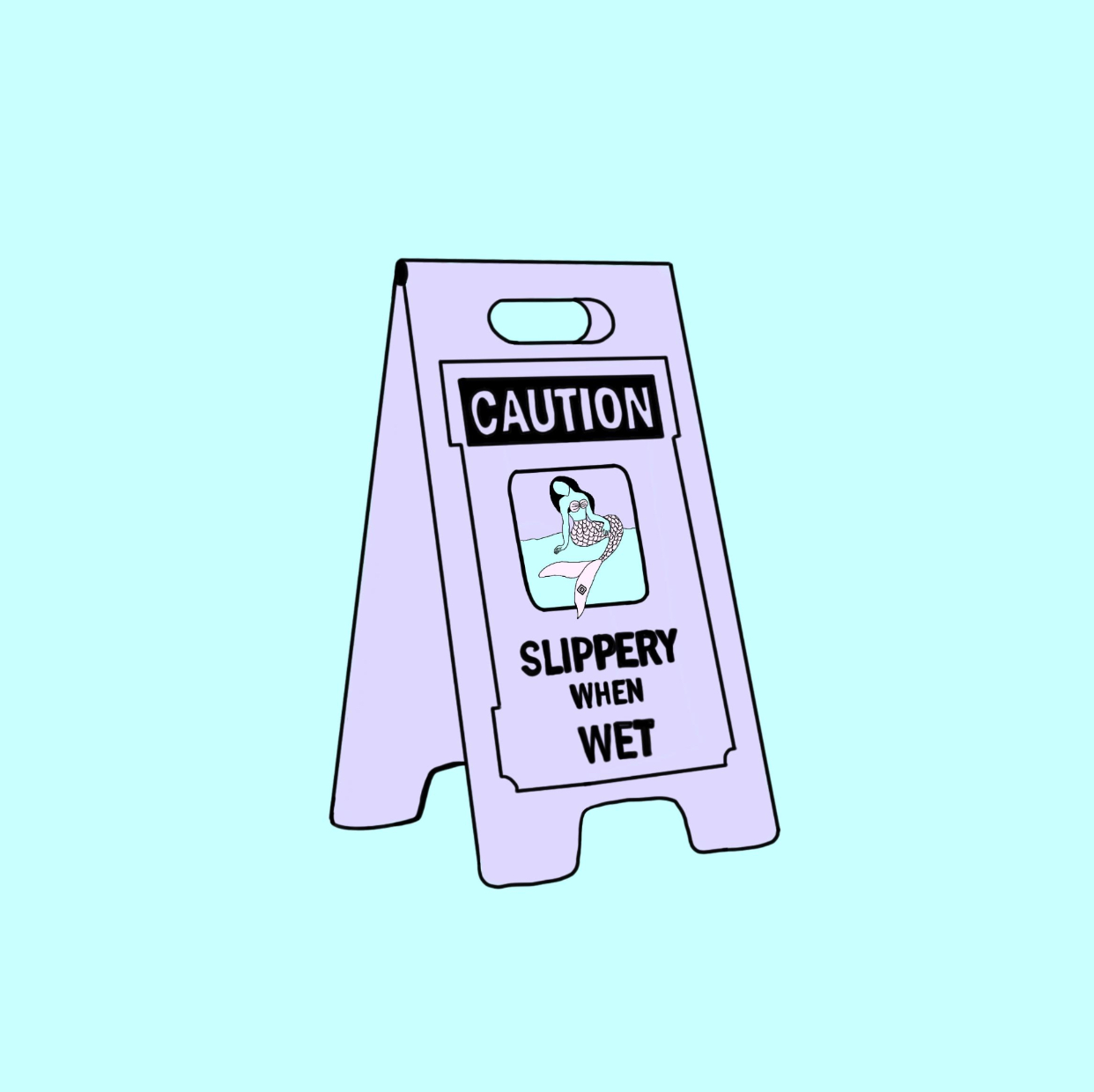
So What Do Lubricants Actually Do?
There's no shame in the lube game. It's quite literally a girl's best friend. From reducing friction to enhancing pleasure, everyone should have a tube of their favorite lube on hand for when things start to heat up. Here's everything you need to know about lube, so you can make an informed decision about how (and when) to use it.Everything You Need To Know About Getting Wet
Getting wet is as normal and healthy as getting an erection. And yet, wetness is not openly discussed. Let's dispel common myths around natural lubrication (or lack thereof) and embrace the fact that our bodies are doing exactly what they are supposed to.

Can You Trust The Certifications On Sexual Health Products?
Shopping for your next vibrator or picking up condoms for a hot date should be fun. But navigating aisles of products with unfamiliar ingredients that force you to decode labels can quickly turn a sexy errand into a stressful one.

In theory, certifications should be a helpful way to evaluate if a product is safe and effective. But in practice, the plethora of certifications—all of which are regulated by private organizations that have their own set of standards—can be really confusing. And to top it off, some certifications are more reputable than others.
So, how can you determine which labels to look for when you're shopping? And what does it mean when a product isn't certified? Here's a quick breakdown of some of the most common certifications you'll find on sexual products and what they actually mean.
What Does It Mean To Be Certified?
Outside of condoms and lube, the FDA does not regulate sexual health products. So your favorite dildos and do-dads can hit the market without any government approval.

You're not alone if that makes you feel icky. Private certifying organizations were created to fill the gap and give shoppers some guidance on what's safe to use.
When a company is certified, that means an outside organization has reviewed the product and deemed it safe for human use. So rather than just throwing the word "organic" on the label, for example, a company that's gone through the certification process can put a special "certified organic" logo on their products that tell you they've met a specific organization's standards.
Generally speaking, certifications are voluntary, and there's no universal standard that products have to meet in order to receive one. Each organization has different requirements, and some are more stringent than others. In other words, certifications aren't foolproof—but they are important for helping you make informed decisions, especially when the FDA isn't providing guidance.

Types Of Certifications To Consider
Advocating for your body (and your pleasure) goes beyond what goes down in the bedroom. Whether you're shopping online or IRL, taking the time to familiarize yourself with certifications can help you make informed decisions about what goes in and on your body. And that's pretty damn empowering.

Here are a few certifications that are popular in the sexual health space and what they really mean:
Organic: When it comes to our good 'ole pal personal lubricant, certified organic (or made with organic ingredients) is ideal. Because if a lubricant is labeled as organic, it should mean that the ingredients haven't interacted with any chemicals.
Vegan and Cruelty-Free: While the two certifications are often used interchangeably, they actually refer to two different things. A vegan product means it doesn't contain any animal products or byproducts, while a cruelty-free item wasn't tested on animals. Some certifying organizations, like PETA, look to cover both bases.
Fair Trade: Ever wonder where your condoms come from? If you want to be sure that they were made in ethical working conditions, look for a fair trade certification. This means that the workers who made your condoms (or lubricant, or sex toy, etc.) were treated fairly and paid a livable wage for their labor.
B Corp: You want to do good and feel good, so look for products that are manufactured by B Corporations. These are businesses that have been verified by the nonprofit B Lab to meet stringent standards of social and environmental performance, accountability, and transparency. With this certification, you can be sure that your money is going to a company that's actually doing good in the world.
Gynecologist-Tested: Many popular washes and wipes on the market today claim to be gynecologist-tested. While that sounds like a pretty good indicator of safety, it's really nothing more than a marketing tactic. There's no third-party certifying organization that verifies this claim—it's simply something companies can say on their own. Ignore it and focus on the ingredients.
Associations That Certify
The certifications we just talked about are all well and good, but which organization can you actually trust?

Like all things in life, it's really up to you to determine which certifications matter to you and which ones don't. Put on your cute investigator cap and check out the certifying organization's website to learn more about their standards and process. Transparency is always a good sign, so look for organizations that are open about how they certify products and what requirements manufacturers have to meet.
Here are a few certifying bodies you'll likely see:
Leaping Bunny: One of the most popular certifications in the beauty industry, Leaping Bunny certification requires that a product and its ingredients aren't tested on animals at any point during development. [Note: products are exempted from the animal testing restriction when testing on an ingredient is required by a regulatory agency, such as the FDA.]
USDA Organic: The gold standard for organic certifications, the USDA requires that products bearing its label meet the rigorous standards set by the United States Department of Agriculture. Meaning their ingredients haven't been exposed to pesticides, synthetic fertilizers, or ionizing radiation.
Made Safe: A nonprofit organization that, through an internal audit process, assists companies selling household products that are not “toxic” to humans and the environment.
PETA: As we mentioned before, PETA certifies both vegan and cruelty-free products. To receive certification, a company must pledge that neither its products nor ingredients have been tested on animals at any point during development.
Vegan Society, Vegan.org, and Vegetarian Society: These certifying bodies all have different requirements, but the general idea is that products must be free of animal products and byproducts to earn certification. Being free of animal testing is not a part of this certification.
What If My Fav Product Is Not Certified?
Just because a product isn't certified doesn't mean it's a dealbreaker. Getting certified costs money and time, so some small or new companies may not be able to get certified right away. Not to mention that not all products qualify for the popular certifications that a lot of people look for. No organization certifies condoms as organic, for example, so look for other attributes when shopping condoms such as natural ingredients, vegan, sustainable, etc.
So while certifications can be helpful to evaluate and trust a product, there are several other factors to consider when deciding how to shop for body-safe sex toys and essentials:
Natural Ingredients & Body-Safe Materials: Nothing is more important than reading the label to determine whether the ingredients are truly healthy and body-safe. Every product, whether it's for contraception or pleasure, has its own unique set of guidelines and any company selling a product should be fully transparent—from a full list of ingredients and explicit directions for use, to sourcing of its materials and the sustainability of its operations. And if you ask a question and get an evasive answer, that's not a good sign.
Shared Values: Head over to the About page and get to know the company—its founders, its mission—and ask yourself if these are people and values you want to support. There's no shortage of purchasing options out there, so you might as well feel reeeaaaally good about the company you're buying from as well as what's going inside your body.
Partners: Look at the company's partners—all of them. If they sell their products with a natural grocer you trust, for example, you can bet that retailer did their homework to affirm the product is not only worthy of their shelf-space but aligned with their values. Likewise, if the company supports organizations that protect the environment or amplify women's voices, those are actions that transcend marketing jargon.

Knowledge is Sexy - And Powerful
You deserve to feel confident and informed about the products you use, especially when it comes to something as personal as sexual health. So do your research. While certifications are a helpful way to evaluate products, they're not the be-all and end-all. Dig in to the ingredients, ask questions if the FAQs don't address your question, explore the values of the company manufacturing the products as well as the retailer selling them to you.
The more you know, the more empowered you'll be to make the best choices for your body—and that's pretty damn sexy.
About The Author
Emily Blackwood is a freelance journalist committed to answering the plaguing question of what makes us truly happy. Turns out, it's a lot. Her work has been published in SELF, HuffPost, and YourTango. You can learn more here.
___________________________________________________
Medical Disclaimer: The information provided here is intended for educational and informative purposes only and is not intended to serve as medical or professional advice. If you have any concerns or questions about your health, you should always consult with a physician or other health-care professional.

How To Shop For Body-Safe Sex Toys And Essentials
In the heat of the moment, you're just worried about whether you even have a condom—not what's in it. But the ingredients in your favorite condom, lube or emotional support vibrator matter more than you think.

What Are Natural Products Anyway?
Being safe in the bedroom means more than just asking for consent and choosing a respectful partner (though those things are mega crucial too). What you use during sexy time - from the condom and personal lubricant to the massage candle and the pleasure device - is just as important.
Many sex essentials and toy products that come into contact with your nether regions contain harsh ingredients or materials that can throw off your delicate balance and irritate your skin. The potential for mood-killing is high enough to send most people down the rabbit hole of "healthy" alternatives.
Terms like "natural," "clean," and "toxin-free," sound great, but they're often vague, unregulated, and sometimes completely unrelated to the nature of the product itself. You shouldn't have to be a chemist to pick out a good lube, arousal balm, or sex toy, so we're peeling back the curtain on what some of these so-called healthy labels really mean.
Can We Trust Labels?

In theory, labels are supposed to give us consumers insight into what we're buying and using. But there's no shortage of words and terms companies use to make their products sound healthier, safer, or more environmentally friendly that don't always have meaning.
Taking responsibility for your sexual health and wellness means not blindly trusting marketing buzzwords on a label and doing a little more diligence. The more you know about what goes into your products, the more confident you can be about using them.
What Does It Mean When A Product Is Marketed As "Natural"?

The FDA currently has no formal definition for "natural" but they have suggested that it "means that nothing artificial or synthetic." Of course, this mainly applies to food—not condoms, personal lubricant, or vibrators.
In the context of sex, "natural" should mean the product is made with plant-based or mineral ingredients as opposed to chemicals. A good rule of thumb is to see if you can recognize the ingredients on the list. If you can't pronounce it or have never heard of it before, it's probably not natural.
Still, the word "natural" is kind of a benign term that companies use to make their products sound healthy. So even if a product is marketed as "natural," more research is usually needed to see if the ingredients are actually safe for your body.
Does Body-Safe Mean It Is Safe For Your Body?

The term "body-safe" is used a lot in the toy industry to describe products made without sketchy materials that leach toxins and irritate your skin (gross, right?). Body-safe products are non-porous and smooth, so they don't harbor bacteria the way something non-safe can.
While the label itself can be helpful and reassuring, it's important to note that there is no legal definition of "body-safe" by the FDA. Just because a product is marketed as safe doesn't necessarily mean that it is.
The best way to tell if a product gets the green light in safety is to check the materials. When it comes to your favorite play things, medical-grade polystyrene (hello, WaterSlyde) or silicone, stainless steel, or borosilicate glass are all good bets.
What About Non-Toxic and Toxin-Free?

The word "toxin" usually conjures up images of industrial waste and smoggy skies, but there are toxins all around us—even in our bedrooms. Chemicals like phthalates and parabens are added to many conventional sex products to make them softer, more flexible, or longer lasting. But they can also throw our hormones out of whack and increase our risk of cancer.
Considering that horrifying information, I understand the need to grab anything labeled "toxin-free." But unfortunately, that word also lives in the wild west of unregulated FDA terms. The only way to be 100% sure your lube or personal wipes are free of harmful chemicals is to diligently check the ingredients list for known offenders (which we'll get to in a minute).
How About Chemical-Free?

"Chemical-free" is another one of those terms that doesn't actually mean anything. To be clear, everything is made of chemicals. The air you breathe, the water you drink, and even your own body is a big ol' chemistry experiment.
When people talk about "chemical-free" products, they usually mean products that don't contain synthetic ingredients or harsh chemicals. But since there's no legal definition, the term can be used pretty liberally on labels. For example, glycerin is regularly called out as a dangerous chemical but there's no distinction made between vegetable glycerin - derived from oils and fats - and synthetic glycerin - derived from petroleum.
Again, don't put too much stock in this kind of marketing and always check the ingredients list.
It's Organic So It Must Be Good, Right?
Our friends at the Food & Drug Administration (FDA) don't regulate the word "organic." That's the domain of the Agricultural Marketing Service of the U.S. Department of Agriculture (USDA) —traditionally for food but it can pertain to any other agricultural products. For cosmetics, body care and personal care products, for example, they can be certified as organic if they are made up of "agricultural ingredients which are organically produced."
An important point to understand here is that the label organic refers to how the food or product is produced or made, and not to what it actually contains. So while an organic lubricant can't be made with pesticides or synthetic fertilizers, it could still be made with materials that may cause a reaction.
There are also ground rules which allow for use of the word "organic" where perhaps not all of the ingredients are, in fact, organic. Are 95% of the ingredients certified organic? Great - you can call it organic. If only 70% - you can offer "made with" your organic ingredients. Less than 70%? No problem - you can still call out the specific ingredients that are organic.
Another tip - just because your favorite mag lists a product in an article on the "10 Best Organic Lubes" doesn't necessarily make it so. Yup, always check the ingredients - and if it's not 100% clear, ask the company who makes it!
Yes, Of Course I Want My Products To Be Vegan
When it comes to veganism, there are a lot of different levels. For some people, it's a dietary restriction and for others, it's a lifestyle choice that extends well into the bedroom.
When it comes to products, vegan generally means that no animal-related ingredients were used and no animals were harmed in making them. Condoms, for example, can be considered vegan if they don't contain casein, a protein found in dairy that can help to soften the latex so that the rubber (condoms) is smooth and thin.
Some products get a vegan certification from an organization like PETA while others use a "100% Vegan" label on their products. In either case, take the claim with a grain of salt and, yes, check the ingredients list.
What Is Non-GMO? Why Is That Relevant Here?
Here's where things get a little science-y. GMOs, or Genetically Modified Organisms, are created in a lab by manipulating the genes of a plant or animal. This is usually done to make the food pest-resistant or herbicide-tolerant.
While the FDA maintains that GMOs are safe to eat, there are some animal studies that suggest otherwise. Accelerated aging, infertility, and immune system dysfunction have all been linked to GMO exposure. And since GMOs can be absorbed through your skin, it's not a bad idea to avoid them in your lubes and condoms. FYI- the butterfly symbol on a Non-GMO Project certification label signifies that the product went through a rigorous process to ensure it doesn't contain any GMOs.
But here's the kicker: labeling something GMO-free or non-GMO - like condoms, for example - when it does not logically contain any chemicals that might be GMO is essentially marketing a distinction without there being any difference. In other words, it's done strictly for marketing purposes to stand out from competitors and not because it's signifying a substantive difference from other brands.
It's A Clean Product? That Sounds Nice.
Some labels mean specific things you can wrap your head around and others are about as clear as mud. Clean is one of those terms. It's often used to describe products that don't contain any synthetic ingredients—but again, since there's no legal definition, it can be used pretty liberally on labels.
Rather than rely on a nebulous term like clean, take a look at the ingredients list to get an idea of what's actually in the product. If you find a bunch of crazy-looking, unpronounceable words, put it back on the shelf.
Plant-Based? We Can Get Behind That!
Yep—animal products can be lurking in some pretty unexpected places. And while you might not be down with wearing leather or eating eggs, you might not realize that some of your personal care items contain animal by-products.
So what's a compassionate consumer to do? Look for products that are plant-based. This means that they were made without any animal products or byproducts and no animals were harmed in the making of the product. Organizations like NSF and the Plant Based Foods Association have certification programs to ensure products are truly animal-free.
While it's still a marketing tool, plant-based at least has some logic to go along with that good feeling.
Good For Sensitive Skin? Pregnancy Safe?
Some people need to take extra precautions when choosing personal care products due to skin sensitivities or pregnancies. Terms like "good for sensitive skin" may lead you to believe that a product is gentle enough for anyone to use—but that's not always the case.
Products labeled as sensitive usually refer to being gentle enough for those with sensitive skin—but since there's no legal definition, it's not regulated. So while the product might be less likely to cause a reaction, it's not guaranteed.
Pregnancy-safe products, on the other hand, have to meet certain FDA criteria to be able to use that label. Products that are safe for pregnant people to use will usually be clearly marked as such, but if you're unsure, check with your doctor before using anything new.
Chemicals To Avoid In Sexual Health Products
Respect for you and your body starts with what you put on (and in) it. So let's avoid the following nasty chemicals as much as we can:
- Synthetic Glycerin
- Propylene Glycol
- Parabens
- Polyvinyl Chloride (PVC)
- Trimethyltin Chloride
- Phthalates
- Toluene
- PEGs
About Nitrosamines In Condoms: Do They Cause Cancer? (Answer: NO)
A few years an article was published entitled "Are Condoms Killing You?" The question was raised because a carcinogenic substance is commonly found in latex condoms (as with baby bottle nipples, it helps to maintain elasticity). Fair question to ask, except for the fact it was suggested by the researcher that only condoms "free of nitrosamines" were safe while others might cause cancer. This myth was destroyed after researchers determined that the level of nitrosamines in latex in condoms is so very, very low and doesn't pose a risk. They estimated that if a person used ~1,500 condoms over the course of their life, the amount of nitrosamines transferred from that number of condoms would need to be one million (!) times higher for there to be even the possibility of being considered toxic. Fear mongering aside, the World Health Organization recommended to the condom industry that it reduce nitrosamine levels and they continue to do so.
Bottom line: as a consumer, look for brands claiming to be "non-detectable" - a level so small that it is considered statistically insignificant - if not nitrosamine-free.
___________________________________________________
No product will ever be 100% perfect and more research is being done every day to help us understand the effects of these chemicals on our bodies. A great organization (and one Lovability is proud to partner with) which is working to eliminate toxic chemicals that harm our health and the environment is Women's Voices For The Earth.
The point is not to live in fear of an ingredient label. It is to be mindful of what you are exposing yourself to and make the best choices you can with the information you have. So don't be fooled by pretty packaging or nice-sounding labels. Do your research, talk to your doctor if you have questions, and find products that work for you and make you feel good—inside and out.
About The Author
Emily Blackwood is a freelance journalist committed to answering the plaguing question of what makes us truly happy. Turns out, it's a lot. Her work has been published in SELF, HuffPost, and YourTango. You can learn more here.
___________________________________________________
Medical Disclaimer: The information provided here is intended for educational and informative purposes only and is not intended to serve as medical or professional advice. If you have any concerns or questions about your health, you should always consult with a physician or other health-care professional.
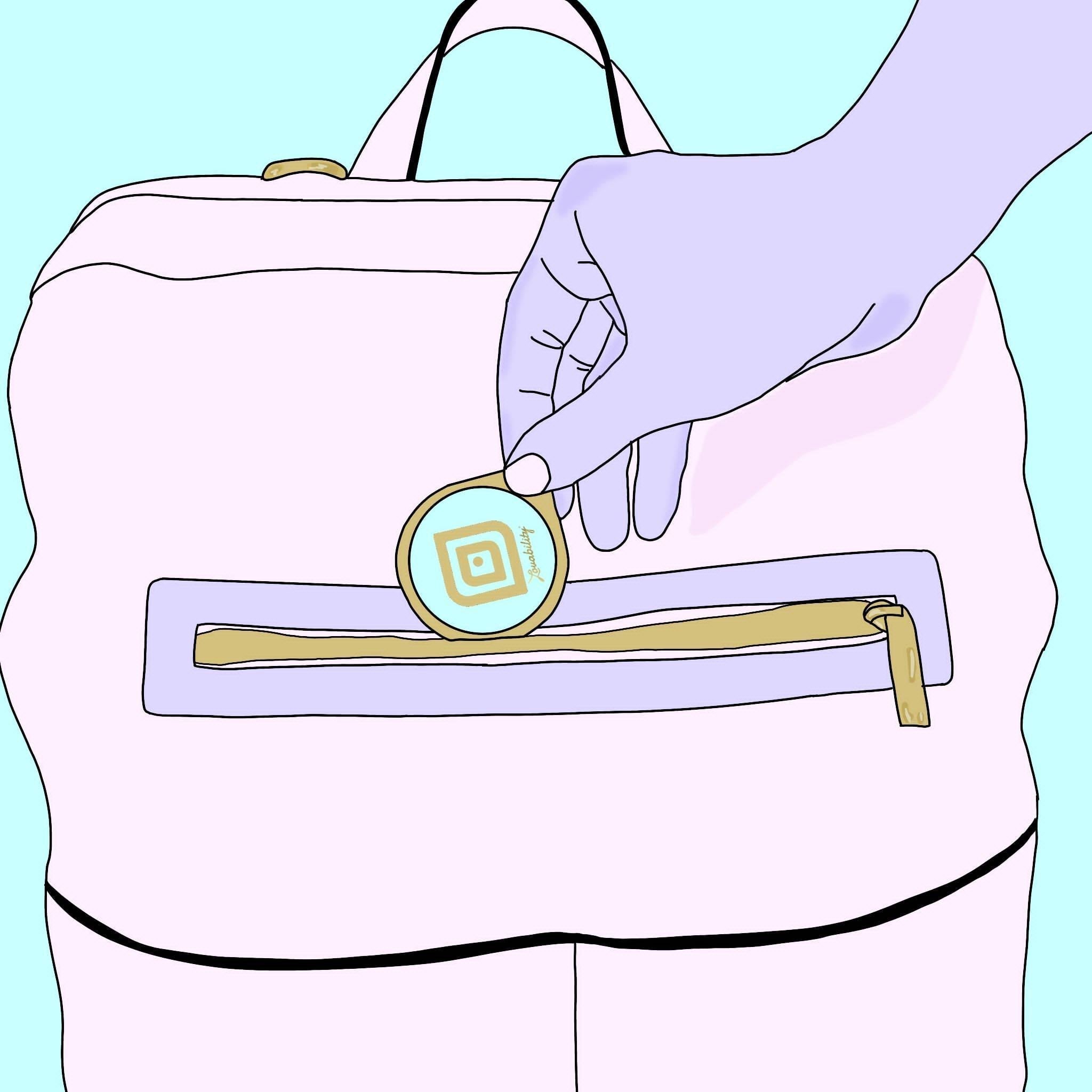
How To (Safely) Make The Most Of Every Intimate Encounter You'll Have In College
Everyone knows college is an era of experimentation — romance included. Before you start exploring your options, here are a few things to keep in mind...
How To Access Every Kind Of Birth Control On Campus
Between internships, classes, and making all sorts of grandiose decisions about your future, babies are probably the last thing you have on the brain. But if you’re sexually active (and not trying to become a parent anytime soon), then birth control should definitely be on your radar.
Though it feels like your campus health center is only equipped to handle the occasional cold or flu, they can actually hook you up with some pretty sweet birth control options, too. And whether they advertise it, many colleges offer free or low-cost birth control to students—even if you don't have insurance.

So if you’re sexually active or think you might want to be, consider this your birth control roadmap, guiding you to all the resources you need to make informed decisions about your sexual health.
Contraceptives Do Not Prevent STIs
Before we dive in, remember that contraceptives are designed to keep an unwanted pregnancy at bay but they will not protect you from STIs. Condoms are the only form of birth control that reduce the risk of pregnancy and STIs. And while condoms are highly effective at protecting against most STIs (such as chlamydia and gonorrhea), they do not protect you from all STIs (for example, herpes, genital warts, and syphilis can spread from skin-to-skin contact). So wrap it up, babe, and get familiar with how to protect against, test for, and treat STIs.
Types Of Birth Control (And How To Find It)
The landscape of birth control has changed a lot in recent years, with new choices becoming available and old favorites becoming easier to access. But as much as science has advanced the birth control buffet, one v-serious caveat remains: no method is 100% effective.
Risk of pregnancy and STIs can never be completely eliminated when it comes to sex. But using birth control can help reduce the likelihood.
There are dozens of contraceptives out there, but they tend to fall into two camps:
- Hormonal: Methods that rely on shifting your hormones to prevent pregnancy.
- Non-Hormonal: Methods that physically block sperm from getting to your eggs.
The kind of birth control you ultimately choose is a very personal decision, and there are pros and cons to each method. All will require a prescription from a doctor, which you can visit at:
- Your campus health center
- A free or low-cost clinic like Planned Parenthood
- Your primary care physician or your OBGYN, if you have one
- Online via a virtual birth control service like Nurx.
Hormonal Birth Control
This kind of contraceptive uses synthetically made hormones to prevent your ovaries from releasing eggs. Different methods do this in different ways, but no eggs = no pregnancy.
While hormonal birth control is pretty effective at keeping that bun out of the oven, it doesn't protect against STIs, and it does come with a lot of unfortunately unpredictable side effects.

Some people feel totally fine, watch their stubborn acne clear up, and enjoy cramp-free periods. Others have to deal with totally unpredictable mood swings, weight fluctuations, and real nasty breakouts. You never know how your body will react to synthetic hormones until you try them.
1. The Pill
Birth control pills are probably the most popular form of hormonal birth control, and for good reason. They're 99% effective in preventing pregnancy—if you use them perfectly.
Because accidentally forgetting your BC pills in your dorm room when you leave for Spring Break is wayyyy too easy, in reality, the pill is more like 91% effective, which is still pretty good.
Pros
- Cheap. The pill can cost anywhere from$0 to $50, depending on your insurance. And if you don’t have insurance, many health centers offer sliding-scale payment options, so you only pay what you can afford.
- Effective. Even if you're prone to forgetting a pill every now and then, it's still over 90% effective.
- Possibly wonderful side effects. Some people report skin clearing, bloat-reducing, and period-regulating benefits from the pill.
Cons
- Possible side effects from hell. Moodiness, weight fluctuations, unpredictable bleeds—the list goes on. Some people's bodies are more sensitive to synthetic hormones than others.
- Easy to forget. Not great for people who are REALLY bad at forgetting to take medicine regularly.
2. The Patch
Not a fan of taking pills? Meet the patch, a small, beige adhesive that you stick on your skin like a Band-Aid. It releases a steady stream of synthetic hormones into your system, just like the pill. Only instead of taking it every day, you leave it on for a week at a time, then replace it with a new one.
The patch is99% effective if—BIG if—you remember to change your patch weekly and make sure it's on correctly.
Pros
- Less terrifying side effects. Nausea and headaches are common, but they don't happen to everyone and usually resolve themselves in at least three months.
- Less frequent reminders. No daily or even weekly pill to take. You just have to remember to change your patch once a week.
Cons
- Not great for water-lovers. Because it can easily fall off in the water, it's not an ideal method for regular swimmers. Some brands of the patch can be used to skip your period altogether.
- More expensive. The patch is a little pricier, ranging from $0 to $150 depending on insurance. Most insurance plans provide the patch for free, but you still need a prescription from a doctor.
3. The Ring
The ring is a small, bendy plastic ring that you insert into your vagina. Once it's in there, it releases a low dose of hormones every day to prevent pregnancy. That's right, friend—no daily or weekly reminders needed.
Currently, two birth control rings exist:
- NuvaRing: which lasts up to five weeks and can be used to safely skip your visit with Auntie Flo.
- Annovera: which lasts for a whole freakin' year—but you have to take it out every three weeks for seven days so Auntie Flo can come to town.
Pros
- Super-effective. The ring is 99% effective when used perfectly (notice a pattern here?) and 91% effective if you forget to take it out every once in a while.
- Less maintenance. You get to worry about your birth control even LESS with only monthly reminders, depending on which ring you choose.
Cons
- Need time to get used to it. Side effects are still possible, and your body may take a few months to adjust.
- Expensive. It also teeters on the very expensive side, costing up to $2,200 for the Annovera. NuvaRing is more in the $200 range, and some are totally free with insurance.
4. The Shot
The Shot (a.k.a Depo-Provera) is a once-every-three-months injection of a synthetic hormone that thickens the cervical mucus to prevent pregnancy. What makes the shot a real star—other than the fact that you can put your BC on a quarterly rotation—is its effectiveness.
Even factoring in people who forget to take their shots on time, the shot is still about 94% effective (and 99% effective when used perfectly).
Pros
- It's uber-convenient (not to mention private). You only have to think about it four times a year, and because it's done in the privacy of a doctor's office, there's no hard evidence that you're on birth control for anyone to find.
- You don't have to worry about messing up. Because the shot is given to you by a professional, there's no way to screw it up.
- You'll get your period less often (and after a year, maybe never). And they'll be much lighter when you do get them.
- It has other health benefits. Beyond preventing pregnancy, the shot can also protect you from uterine cancer and ectopic pregnancies.
Cons
- Some not-so-great side effects. Most have to do with your period, like spotting and bleeding for longer, but some people also experience weight gain, headaches, and even depression.
- You have to wait 10 months to get pregnant after stopping. When and if you are ready to have kids, you'll have to wait a while after your last shot before trying to conceive.
- It's expensive. Some health insurance covers it for free, but if not, it can be up to $250 per shot.
5. The Implant
We've arrived at the level of get-it-and-forget-it birth control babes. The implant is a small rod (about the size of a matchstick) that's inserted under the skin of your upper arm. It releases progestin, which thickens the cervical mucus and prevents ovulation, for up to five, yes FIVE, freakin' years.
Can I get a hallelujah?

Because there is literally no room for user error, the implant is about 99% effective—the most foolproof method on this list.
Pros
- It's long-acting and low-maintenance. You get it once and don't have to worry about it for years.
- Respects your privacy (and your time). No condom wrappers or birth control pill packets to hide away—and no monthly reminders to help you forget.
- Your period may become lighter or disappear altogether. Bonus!
Cons
- More doctor visits. It has to be inserted and removed by a professional (ouch).
- You may start spotting. Irregular bleeding is suuuuper common within the first year, as are headaches, nausea, and breast pain,
- It's pricey. Getting the implant can cost up to $1,300, and removing it is around $300. BUT most insurance lowers the cost—or covers it completely.
Pros
- It's a backup for your backup. If you miss a birth control pill, you can make sure you’re always covered.
- The one-time cost is relatively inexpensive. ECs with levonorgestrel cost around $40, while pills with ulipristal acetate are a little pricier at $50.
- It's super convenient to grab when you're in a pinch. Just make a quick appointment with your doc or swing by the store.
Cons
- It doesn't prevent pregnancy as well as other contraceptives. EC is not a replacement for every day pregnancy prevention.
- You may experience some not-so-fun side effects. Spotting or nausea is temporary but common.
- It may not work for everyone. Levonorgestrel pills are less effective if you weigh over 165 pounds, and ulipristal acetate pills are less effective if you weigh over 195 pounds.
Non-Hormonal Birth Control
Now, if you're wary of putting any more hormones into your body than you have to, there are a couple of non-hormonal methods available to you. They just may require a little more vigilance on your part.
1. Barrier Methods
Most barrier methods work by physically blocking sperm from getting to the egg. They're popular because they can be used on demand (no need to plan ahead), and they don't have any hormones. You can grab most of these for free or at super low cost at your campus health center.
Barrier methods include:
- Condoms: They come in male and female/internal varieties, and you can often find them for free at your local campus health center. Just remember: condoms are only effective when used correctly, so make sure you know how to put them on (and take them off) before things get heated. And yes, condoms reduce the risk of both pregnancy and STIs.
- Diaphragms: This domed cup is inserted into the vagina before sex and covers the cervix to prevent sperm from getting through.
- Spermicide: This is a chemical that kills sperm on contact. It comes in foam, film, gel, suppositories, and creams, and you can find it over the counter at your local drugstore. Spermicide must be used with another barrier method to be effective. Just don't use it with the sponge as that already contains a spermicide.
- Sponge: The sponge is a small, disk-shaped piece of soft plastic with a spermicide in it. It's inserted into the vagina before sex and blocks sperm from getting to the egg. You can find it over the counter at your local drug store or online.
- Cervical cap: Like the diaphragm, this small cup is inserted into the vagina to cover the cervix and block sperm from reaching the egg. It needs to be used with spermicide, and it must be fitted by a healthcare professional.
Because they require some attention before, during and after sex, barrier methods are not quite as reliable as hormonal birth control options. If you choose to use barrier methods, understand that there's still a risk of pregnancy - and only condoms reduce the risk of transmitting STIs.
2. The Copper IUD
As it turns out, synthetic hormones aren't the only route to (more effective) pregnancy prevention. IUDs (or intrauterine devices) are small, T-shaped pieces of soft, flexible plastic that are inserted into the uterus and wrapped in copper.
Here's some weird science for ya: copper is toxic to sperm. So when you get a copper IUD, you can enjoy a whopping 99% effective rate for up to 12 years.

Outside of the copper armor, there are some hormonal IUD options. They work by releasing a small amount of progestin (a synthetic hormone) into your body, which thickens the cervical mucus to block sperm. They're just as effective as their copper-wielding counterparts, except they only last from 3 to 7 years, depending on which brand you get.
3. Fertility Awareness
And finally, we've come to the most "au naturel" of the birth control methods: fertility awareness.
Rather than implanting or inserting anything, you simply track your ovulation via basal body temperature and cervical mucus (usually using an app designed for FAM) to determine when you're most likely to get pregnant. When your most fertile days arrive, you either use a barrier method or avoid getting frisky altogether.
The most important thing to keep in mind is that FAM is about 76 to 88% effective. This is mostly due to human error (we're forgetful, sometimes messy creatures), so if you're looking for something with a higher success rate, this may not be the best method for you.
Choosing The Right Birth Control For You
The actual process of choosing birth control can feel kind of like a dark, mysterious labyrinth. And navigating that labyrinth is all about getting in tune with what works best for you in this season of life.
Set yourself up for sexual wellness success by being 100% honest about your birth control needs and preferences. Do you want something long-lasting, or are you okay with popping a pill every day? Can you handle remembering to take/change/insert something before sex, or do you need something that's more low-maintenance?
Your answers to these questions will help you zero in on the best contraception option for you and your body.

No method of birth control is perfect—or permanent. So whether you're just starting to have sex or you've been at it for years, make sure you revisit your contraception choices on a regular basis. As your body changes and your life circumstances evolve, so too should your birth control method.
About The Author
Emily Blackwood is a freelance journalist committed to answering the plaguing question of what makes us truly happy. Turns out, it's a lot. Her work has been published in SELF, HuffPost, and YourTango. You can learn more here.
______________________________________________________________
Medical Disclaimer: The information provided here is intended for educational and informative purposes only and is not intended to serve as medical or professional advice. If you have any concerns or questions about your health, you should always consult with a physician or other healthcare professional. e.g. Planned Parenthood, CAPS, etc.











